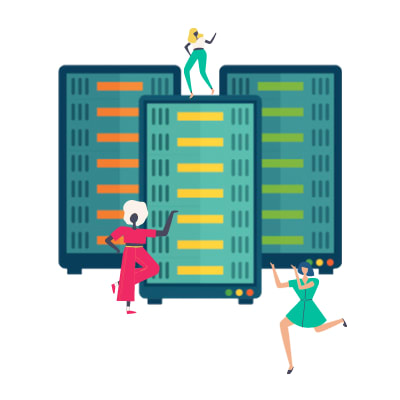Working as a Web Developer: Front-End vs. Back-End was originally published on Springboard.
Full-stack, back-end, front-end — as a web developer, you can specialize in so many different areas. Which one should you choose? Do you need to know a bit of everything? Generally speaking, the more versatile you are as a developer, the more desirable you are to hiring managers.
While Springboard’s Software Engineering Career Track prepares you to work as a full-stack software engineer, it can also be a good idea to decide on a niche to help you concentrate your job search efforts and focus on specific programming languages.
Here, we do a comparison of back-end development versus front-end development so you can see how they stack up (no pun intended).
Front-end web developer
What does a front-end web developer do?
The front end refers to the “client-side” interfaces a user sees in a website or software/mobile application. A front-end web developer is responsible for the look, feel and user experience of the application. Typically, websites created by front-end developers don’t need to interact with information stored in a database to be functional.
 The content is “fixed,” unlike a dynamic site where large pieces of data are constantly uploaded. Static websites are more common for businesses like restaurants or small businesses owned by independent contractors or sole proprietors, such as an interior designer or lawyer.
The content is “fixed,” unlike a dynamic site where large pieces of data are constantly uploaded. Static websites are more common for businesses like restaurants or small businesses owned by independent contractors or sole proprietors, such as an interior designer or lawyer.
For these sites, web presence and searchability are more important than enabling people to accomplish tasks on the website — unlike an e-commerce or social networking site.
Responsibilities:
- Writing and analyzing code
- Debugging applications
- Web design
- Creating a positive user experience
Programming languages:
- HTML
- CSS
- JavaScript
Additional skills: You’ll also learn about responsive design along with typography, layouts, grid systems and color theory.
Potential job titles:
- Front-end developer
- Web developer/web designer
- UI/UX designer (front-end developers who focus on the user interface or user experience)
Front-end web developer salary:
According to Payscale, the national average starting salary for a front-end web developer is about $71,000. Salary ranges from $48,000-109,000 based on experience, location and industry.
Back-end web developer
What does a back-end web developer do?
Back-end web developers work on the server-side of a software application — all the infrastructure that the user doesn’t see but which enables them to accomplish tasks in an application. This type of web developer is most focused on site responsiveness and speed, and monitoring site functionality is their number one responsibility. Typically, a backend web developer oversees a server, application and a database.
 Website code written by a back-end developer is what communicates the database information to the browser.
Website code written by a back-end developer is what communicates the database information to the browser.
Back-end web developers work on dynamic websites, which are different from “fixed” or static websites in that they store database information. Content is constantly changing and updating. Examples of dynamic sites include Facebook, Twitter and Google Maps.
Responsibilities:
- Maintaining site functionality
- Updating servers and software architecture
- Uploading new database content
Programming languages:
- Java
- PHP
- Ruby on Rails
- Python
- .Net
Potential job titles:
- Systems engineer
- Full-stack web developer
Back-end developer salary: According to Payscale, the national average starting salary for a back-end developer is $70,577. Salary ranges from $40,000-$99,000, depending on experience, location and industry.
The post Working as a Web Developer: Front-End vs. Back-End appeared first on Springboard Blog.

